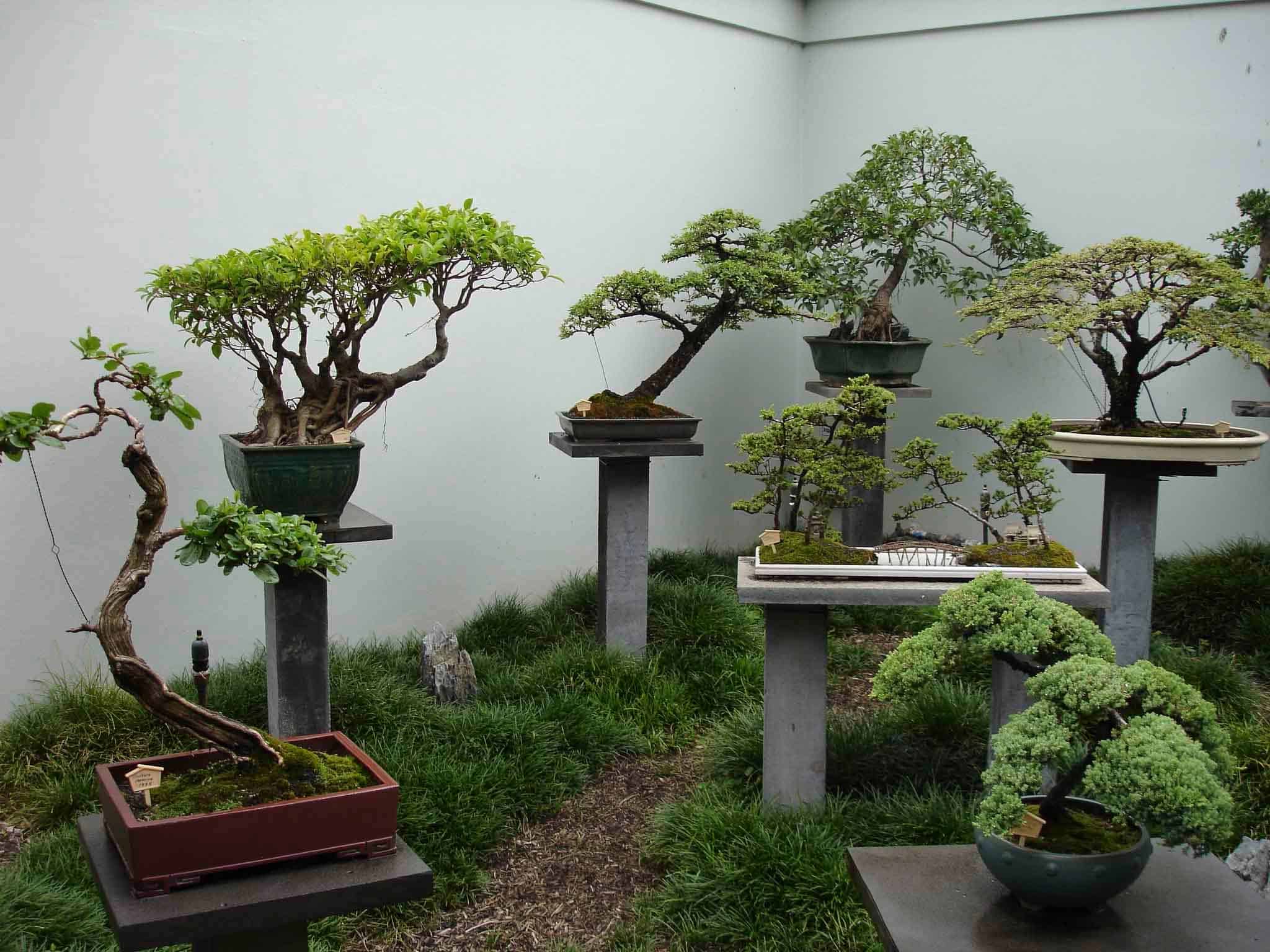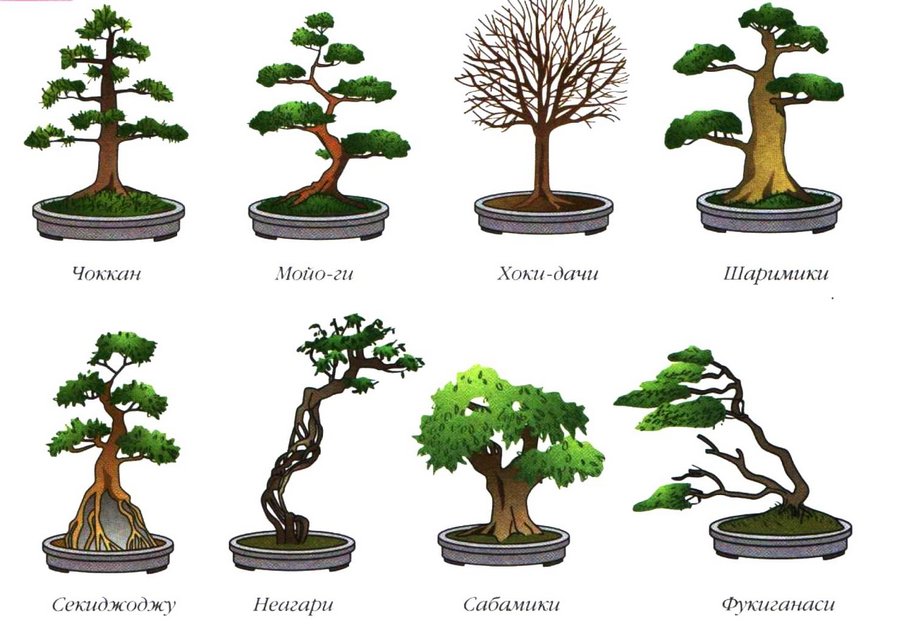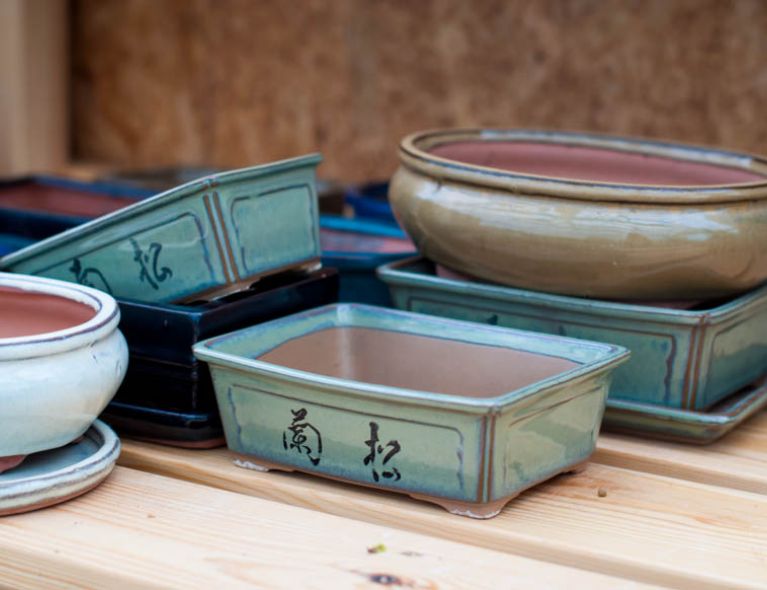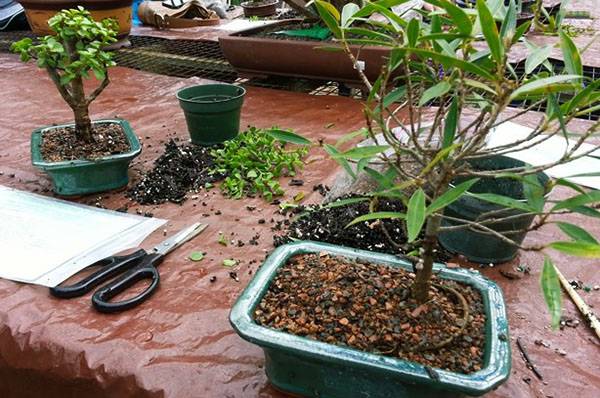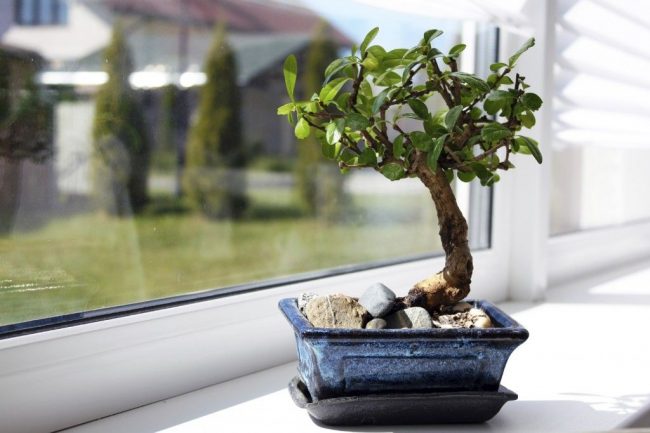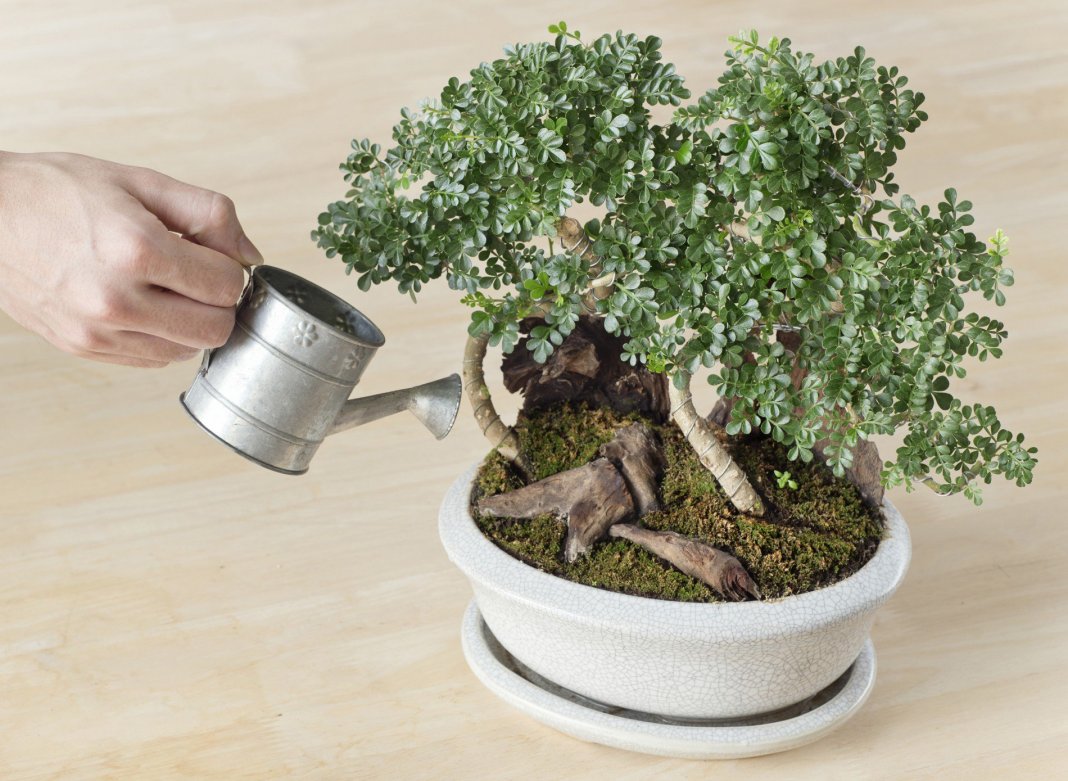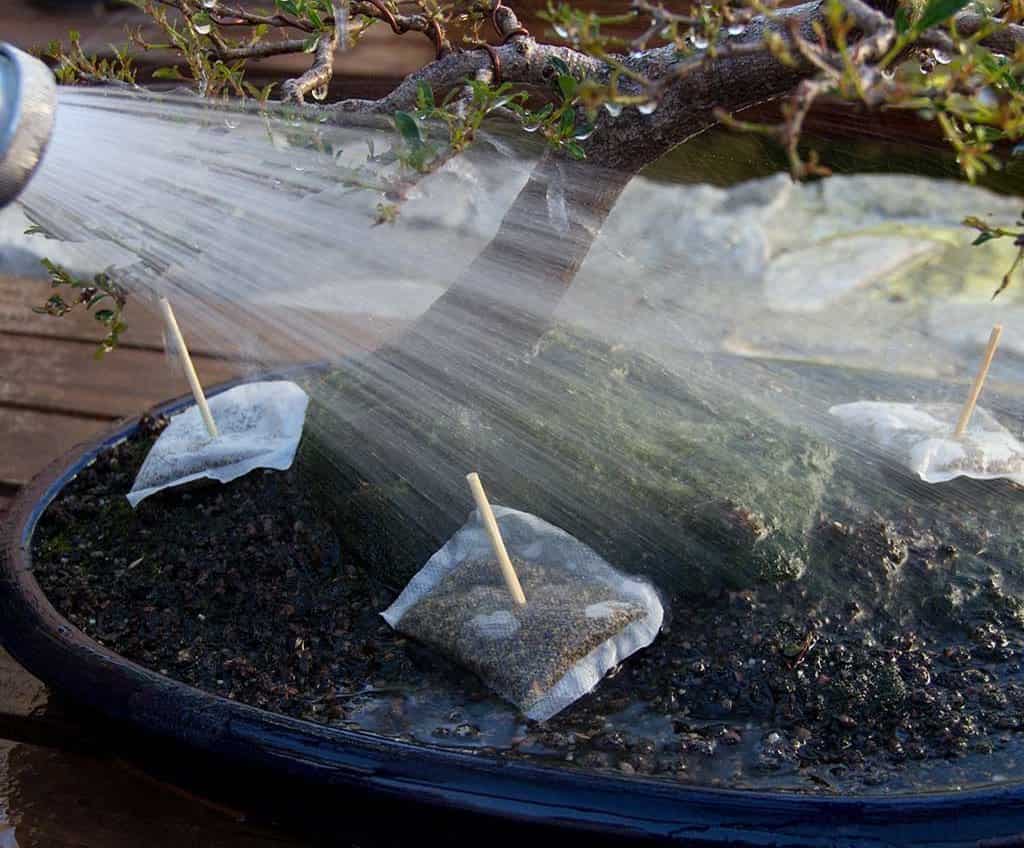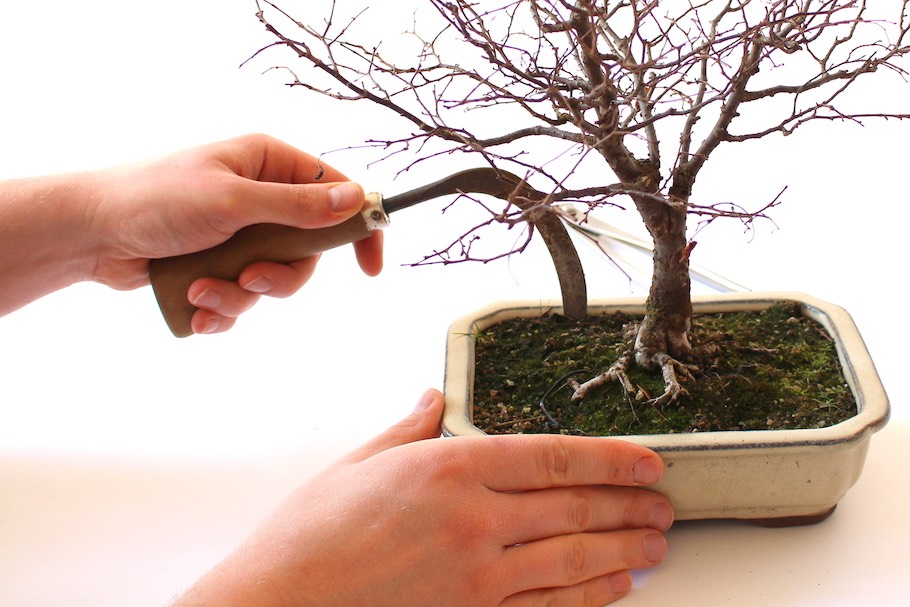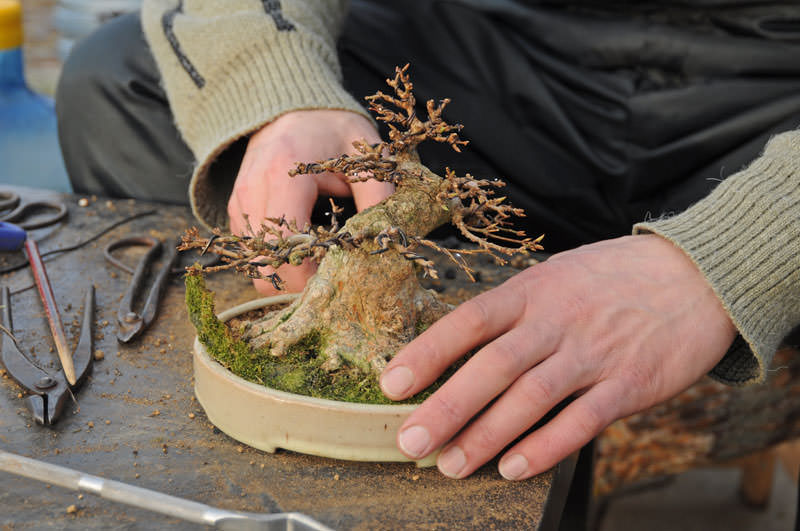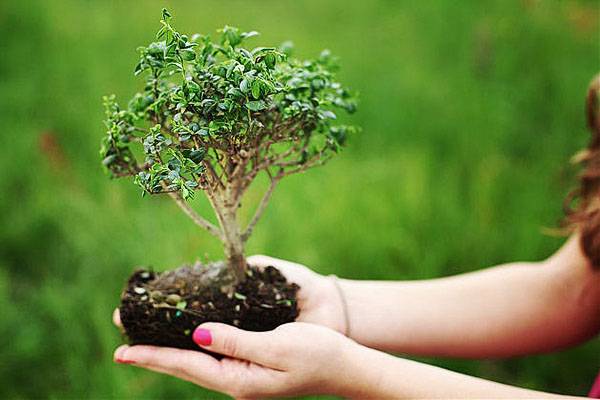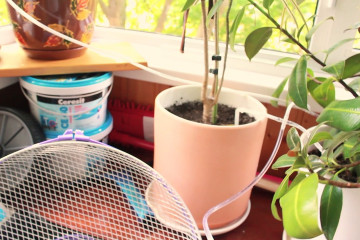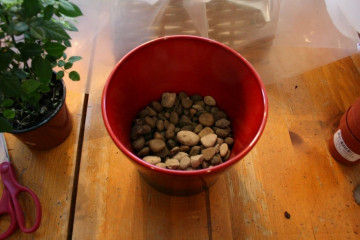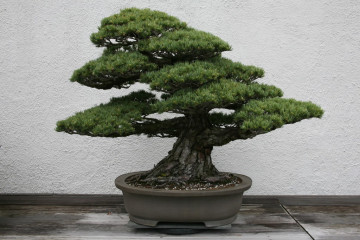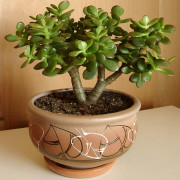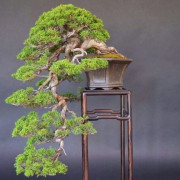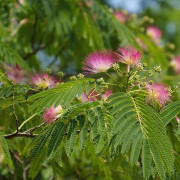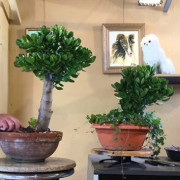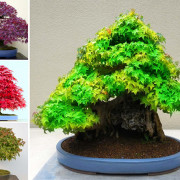Bonsai - DIY home care
Content:
Bonsai is a culture that requires special skills in growing dwarf plants with a unique appearance. There are several varieties of bonsai, but the most common is Benjamin. Each variety requires care and growing conditions. If everything is done correctly, then you can even get an original tree from a ficus.
Bonsai crown formation
Bonsai are houseplants that need constant pruning. This provides visual appeal and the ability to control growth. There are various forms of bonsai.
How to form a bonsai yourself (crown):
- Each shoot should have no more than 6 pairs of leaves. You can start from the top, since the maximum number of extra shoots is removed here.
- Be sure to prune branches that are too long, dry, gnarled, damaged and discolored.
- Remove the processes that are turned towards the trunk in the direction of growth.
- Use scissors to remove excess leaves if there are places with dense formation on the branches.
The formation of bonsai also lies in the beautiful bending of the trunk and branches. This can only be achieved with wire. Shoots and trunk are tied with stiff wire. As it grows, the shape of the wire changes, which will guide the growth of the branches, as well as their shape. Skills and hours of hands-on experience are required.
Pot selection
As the crown grows, the aerial part can make the plant heavier. As a result, the pivot point shifts. If you initially choose the wrong pot, then the tree will tilt over time or the roots will open.
How to choose a bonsai pot:
- They prefer special ceramic bowls, which are specially made for growing bonsai.
- If you don't want to choose a standard container for planting, get a shallow ceramic pot.
- The container should be shallow but large in diameter. This will allow the roots to grow in all directions.
- Drainage holes are required. They are designed to remove excess moisture and additional root attachment.
- You can purchase a special bonsai planter with the same characteristics as a special bonsai pot.
The uniqueness of such containers lies in their design. There are trendy bowls that fit perfectly into the high-tech style interior. Others are made in a retro style, reminiscent of antique bowls. The containers, made in Japanese style, create an oriental flavor.
Choosing a soil for indoor bonsai
The soil for bonsai should be good for air, but be dense so that the roots of the plant can take hold. If you grow bonsai in the garden, home care remains unchanged.
The soil for bonsai is prepared independently. At the same time, it is taken into account that for each type of bonsai they use their own substrate:
- conifers (thuja): sand and sod land in a ratio of 2: 3;
- flowering rocks: sod land + humus + sand in a ratio of 7: 1: 3;
- deciduous trees (juniper): turf + sand in a ratio of 7: 3.
A drainage layer must be placed at the bottom of the pot. Expanded clay chips are usually used. How to care for bonsai?
Rules for caring for bonsai at home
Bonsai is a tree that is easy to care for at home if you devote enough time to it. In order not to provoke problems with the growth of any breed, initially it is worth choosing the right place and setting the correct temperature regime.
Where to put bonsai
The windowsill will be an ideal place for the plant. It is important to consider:
- When installing a flowerpot on the windowsill of a western window, it is worth placing it on the right.
- On the windowsills on the south side, they are placed on the left.
- It is permissible to put the pot on a coffee table or shelf near the window, but according to the same principle as on the windowsill.
- The plant should be turned 180 ° relative to the light side of the window 4 times a week.
- You need to fully open the window, removing curtains or blinds during daylight hours. In winter, additional illumination from fluorescent lamps is installed.
- The plant should not be placed close to objects that emit heat - radiators, table lamps, fireplaces.
Air temperature
Bonsai, the care of which requires the correct temperature regime, will develop normally only in the climatic conditions familiar to its breed:
- Subtropical rocks tolerate room conditions remarkably in terms of temperature conditions. The optimal indicator for them will be 18-25 ℃ above zero. In winter, it should be placed in a cool room with a temperature of +15 ℃.
- Tropical rocks can withstand higher temperatures in summer, and in winter they are installed in a room with a temperature of +18 ℃.
- Deciduous and conifers (for example, tea tree) feel normal in summer at all temperatures. In winter, flowerpots are transferred to a room with a temperature of no higher than +10 ℃.
Watering
In the process of caring for a plant, watering problems often arise. There are several reasons. A small amount of soil in pots or pots leads to the fact that moisture from them quickly evaporates, the soil dries out. Heavy (over) watering can also cause root problems. It is necessary to adhere to a clear irrigation regime.
Additionally, it is recommended to use special watering tools so that the root zone of the plant is not exposed. A watering can of a special design or drip irrigation is used.
Water the bonsai flower exclusively with melt water. If there is none, well-settled water is used instead. The temperature at the time of watering should be at room temperature.
Fertilizer
It is possible to grow a miniature tree only by limiting the application of fertilizers. But it is also impossible to leave the substrate without feeding. To support the growth and development of the plant, follow these guidelines:
- In the spring, a minimum dose of nitrogen fertilizers is applied. Such feeding activates growth.
- In summer, a complex fertilizer is used, which includes nitrogen, potassium and phosphorus.
- In the fall, you should use the minimum dose of potassium-phosphorus fertilizers.
Flowering or fruiting breeds require additional feeding. Microclimate indicators are important for the development of culture. During the period when fruits or ovaries appear, potash fertilizers are applied.
Root system care
The root system of the plant is quite vulnerable. Mainly because of this, bonsai cultivation is considered problematic. To avoid difficulties with development and growth, it is worth doing everything possible so that the root is stable and protected from negative influences.
What do we have to do:
- To strengthen and form mulch, moss is planted over the root system.
- A stone is often laid at the base of the root system, around which lateral shoots will form above the soil surface.
- As the roots grow, they are pruned and shortened. This should be done while the processes are still very thin. By its appearance, you can easily determine which process is to be removed.
In the same way, the root system of street bonsai is taken care of.
Transfer
It is recommended to replant the tree in 2-3 years. The procedure is carried out in early spring (March-April). But some breeds prefer to be transplanted in the fall. The principle of choosing a container and substrate is the same as for the first planting.
With the help of a special tool, the root system is cut off, after removing excess soil from the processes. Set the plant in a new substrate and lightly press down on the soil around the trunk. For more stabilization during the rooting period, a stone can be placed under the trunk.
Diseases and pests affecting bonsai at home
Before growing bonsai indoors or in a garden, it is worth making sure that the plant is not affected by pests and diseases. Garden bonsai especially requires protection. Indoor bonsai can also be attacked.
Yellow bonsai leaves
Chlorosis is the main cause of leaf discoloration. How to care for a plant so that the leaves do not turn yellow? The measures are taken as follows:
- increase the amount of light;
- adjust the watering mode;
- make timely feeding;
- follow pruning schemes in the process of crown formation;
- set normal humidity.
Aphid
Aphids are small green beetles that are located on the bottom of the platinum leaf. They are removed with cotton wool dipped in ammonia, and the crown is sprayed with a special solution to combat aphids.
Fleecy aphid
A more dangerous species of aphids, the fight against which comes down to treating the plant with a stronger chemical.
Shield
The scabbard is identified by the presence of growths at the base of the root and on thin branches. The growths are removed with a needle and the areas are sprayed with an insecticide.
Bark beetle
You can identify the pest by the presence of small holes in the bark. The beetle is located under the bark and causes great harm to the plant. It is necessary to remove the affected branches and spray the plant with a special substance. During the growing season, the dose of top dressing is increased.
Powdery mildew
It affects the leaves, appearing in the form of a white bloom. In this case, the leaf plates can die and fall off. This is a fungal disease that requires drastic solutions. Remove all affected leaves. The foliage is sprayed with a fungicide.
Growing bonsai at home is a painstaking work that requires some skills and abilities. Initially, it is worth creating comfortable conditions for the growth and development of the plant - to produce the correct watering, establish a normal temperature regime and choose a suitable place in the house. This is a power even for a novice florist.
